
It’s a funny thing but each year the whole Christmas shenanigans seems to begin earlier in direct correspondence to the older you become!
Take a break from the list-making, pudding-stirring and sock-buying and get on with a few gardening tasks, such as planting lilies, prepping herbs for winter use, and earthing up the cabbages…
Lovely lilies
If the ground isn’t frozen, now is a good time to plant some lilies in a sunny place (though it’s even better if their roots are in shade, and their heads are in the sun), to bring beauty and scent next year. First things first: don’t buy dried-out bulbs – they should be plump and luscious. They are happiest on a neutral to acid, free-draining soil, so dig in some grit or sharp sand if the earth is inclined to be heavy and damp.

Next, planting depth. Stem-rooting lilies like the turk’s cap lily (L. martagon), trumpet lily (L. longiflorum) or (my absolute favourite) L. regale must be planted deeply – at least three times the height of the actual bulb. Oriental lilies root from the base of their bulb but also like to have at least twice their height of soil above them, while the Madonna lilies (L. candidum) or L. testaceum, can be planted at a more shallow depth – really just under the surface of the soil.
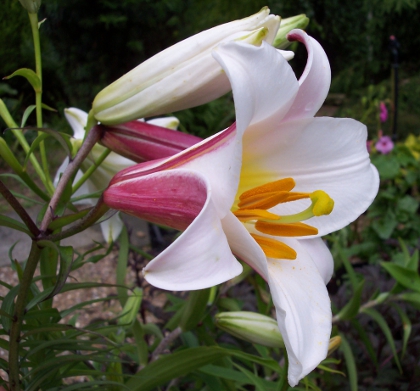
A rough guide to the distance between them is three times their diameter, but the Oriental kinds can tolerate being planted much more closely together, and that’s why they are the best lilies for pots.
Label the spot, and cover it with a nice mulch of something (Laura is using leaf mould in our feature pic this week), and perhaps some grit over the top to deter those wretched slugs and snails a bit.
Laura has been doing just this job this week and has made a handy little video of the process – click on the link at the bottom to see how she did it.
Lastly, a word of warning: the wretched red lily beetles can seek out these plants depressingly quickly and rapidly make a horrible mess of the stems, leaves and buds. So be on the lookout for them from March onwards and squash them! Watch out: they have a knack of falling to the ground and disappearing when they think they are being attacked – put a piece of white paper underneath them before you get near, then you’ll see them when they drop.
Herbs for winter dishes
It’s possible to create that same ease of ‘herb-availability’ during the winter as in the summer, but it requires a little more effort. There are loads of herbs that can be grown indoors in pots – parsley, sage, rosemary, thyme (sorry to go all Folk Music on you there!), basil, chervil, chives, tarragon, oregano, even bay……
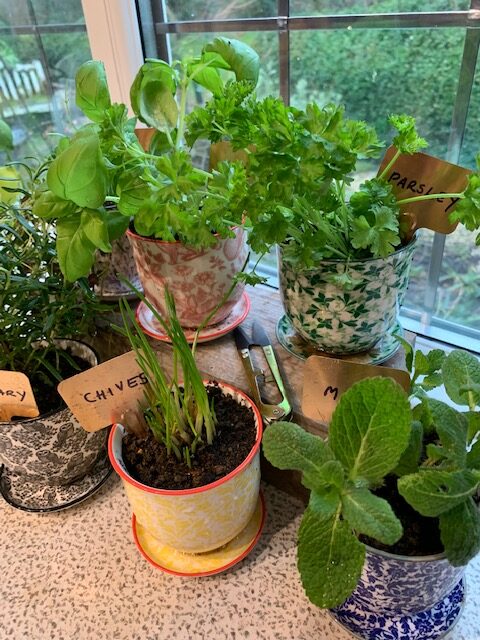
You need to find them as sunny a windowsill as you can, to give them at least six hours of sun on a good day. Any less, and you might find that they go spindly and flavourless. Heat-wise, they are happy in the same temperatures that we are indoors, and being on the windowsill behind the curtains at night will be okay too.
I would suggest that you go for decent-sized pots if you have the space, so that you can pick and snip at will. The pots must have drainage holes (try to remember to water sparingly to increase the herb’s flavour) but sit the pots on saucers etc. to save the window-sill surfaces.
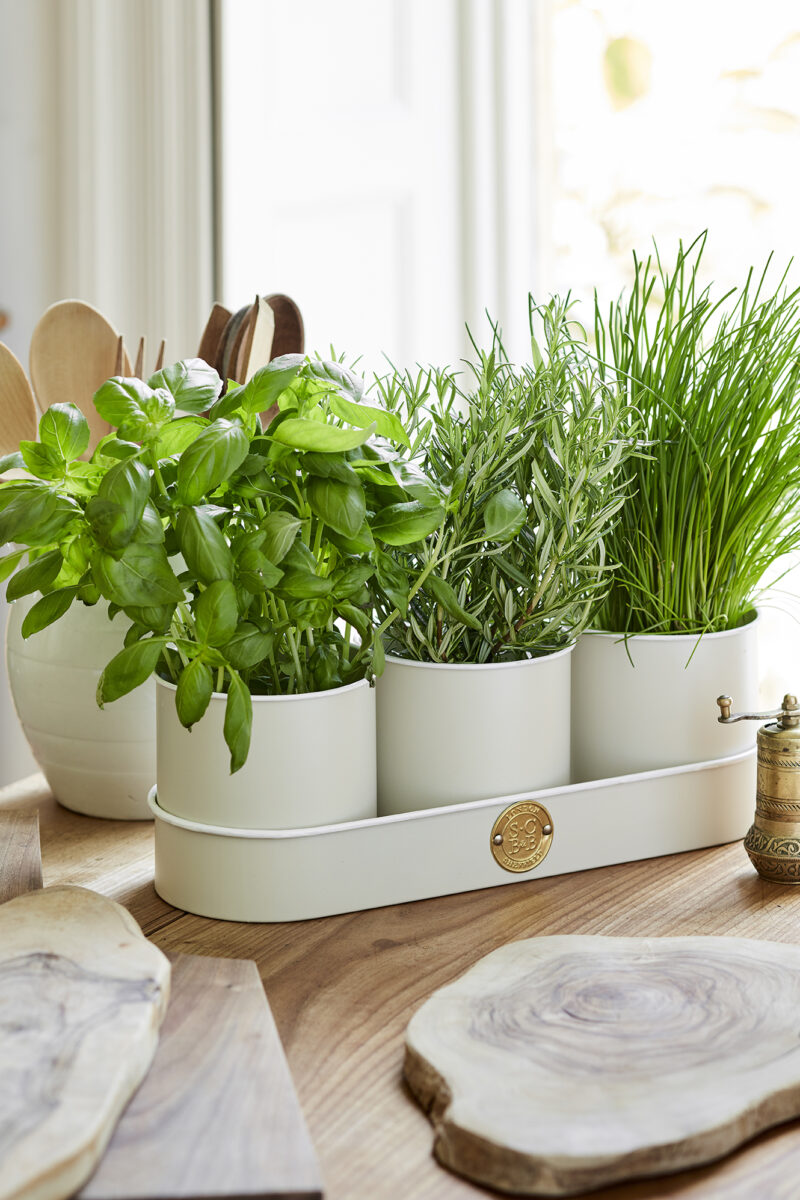
If you dig up clumps of chives, oregano or parsley from the garden to grow in a pot indoors, acclimatise them first by leaving the pots in a very cool indoor spot for a few days before they get the full-sun treatment. Otherwise, buy pots of things at garden-centres, supermarkets etc. Seed is cheaper but takes much longer, of course.
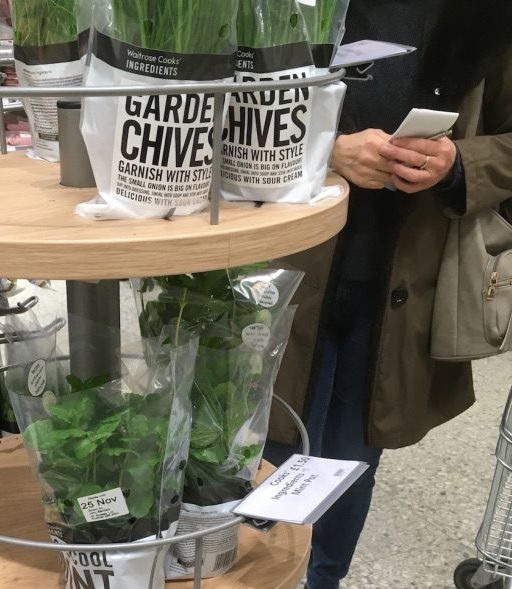
They won’t need much in the way of feeding, but benefit from a general fertiliser once or twice a month. And keep using them! Once the herbs are about 6” high, snip them off regularly to keep them bushy and healthy. If they do start to look stressed and unhappy, you may have to replace them – remember things like basil and dill are only annuals anyway!
Gardening shorts
- Have you got cabbages, broccoli or cauliflowers growing outside? It’s a good idea to pull the earth up around the stems with a hoe or trowel, to stop them rocking around in winter winds. Take off any yellowing leaves too, and tie the stems of brussels sprouts to canes.
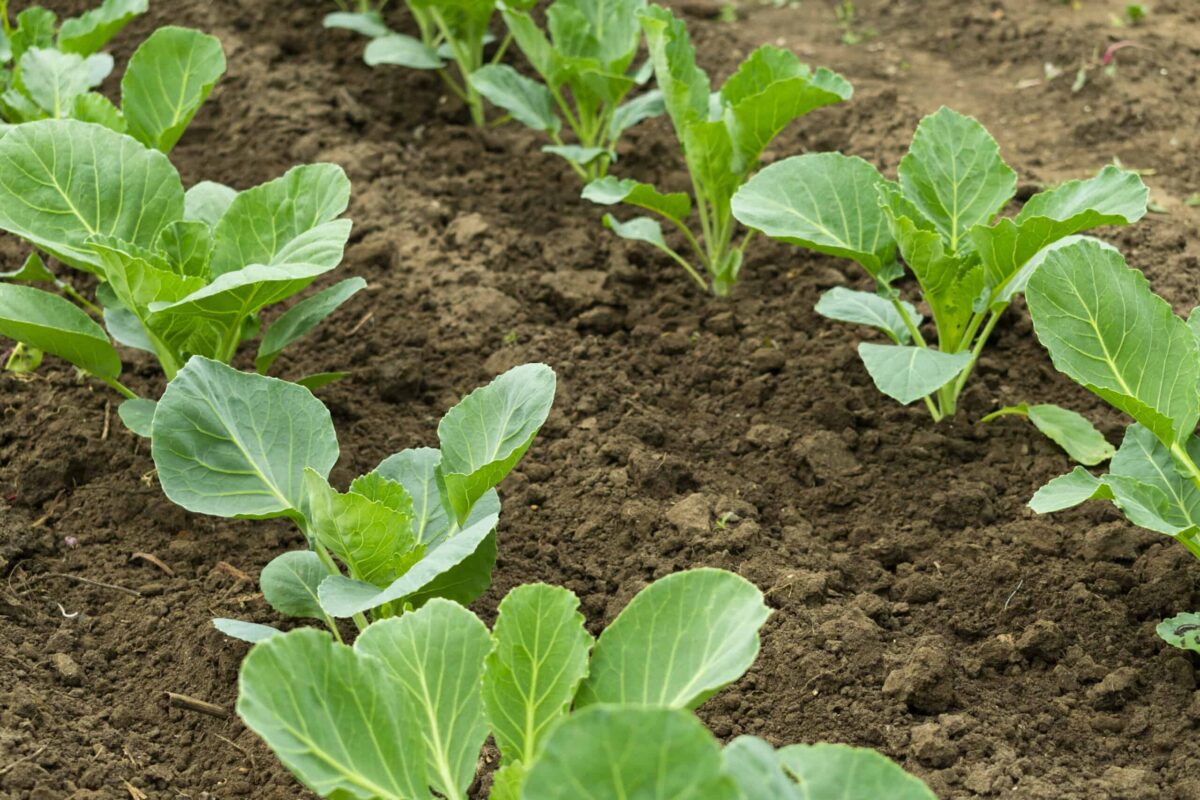
- If you have evergreen shrubs growing in pots, do make sure you keep them watered – cold winds can quickly desiccate their foliage.
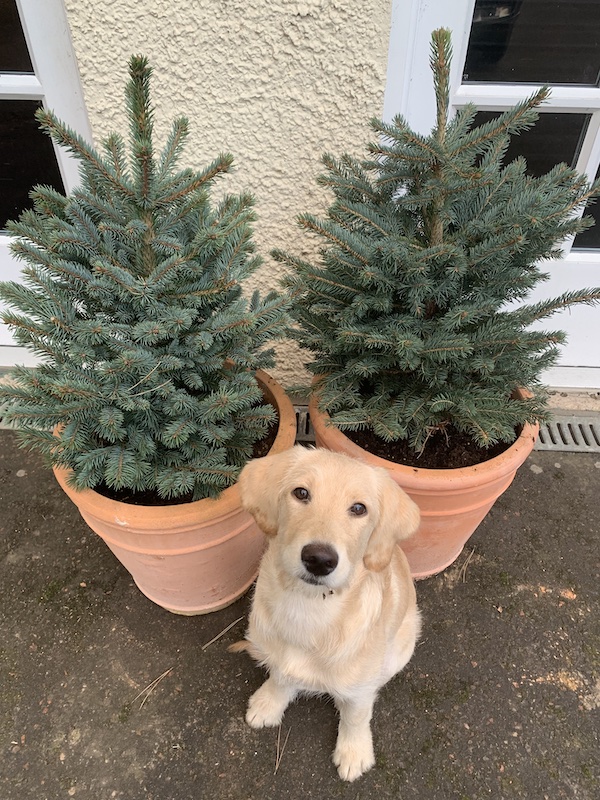
- Order your seed potatoes now. There are so many lovely varieties to choose from, and you will get the best choice!
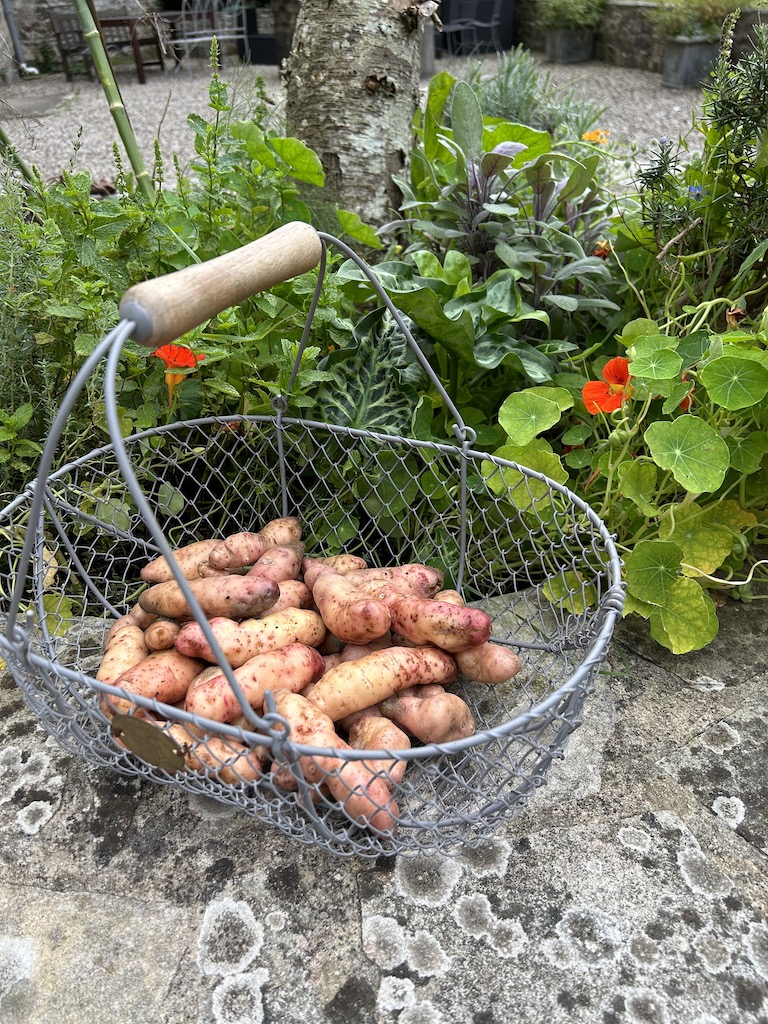
- If you don’t lift your dahlias or agapanthus to overwinter, but leave them in the ground, then put a thick ‘dry’ mulch over them – chipped bark would be a good choice – to protect the tubers and roots from the worst of the frost.
Here is the link to Laura’s video about planting lily bulbs.
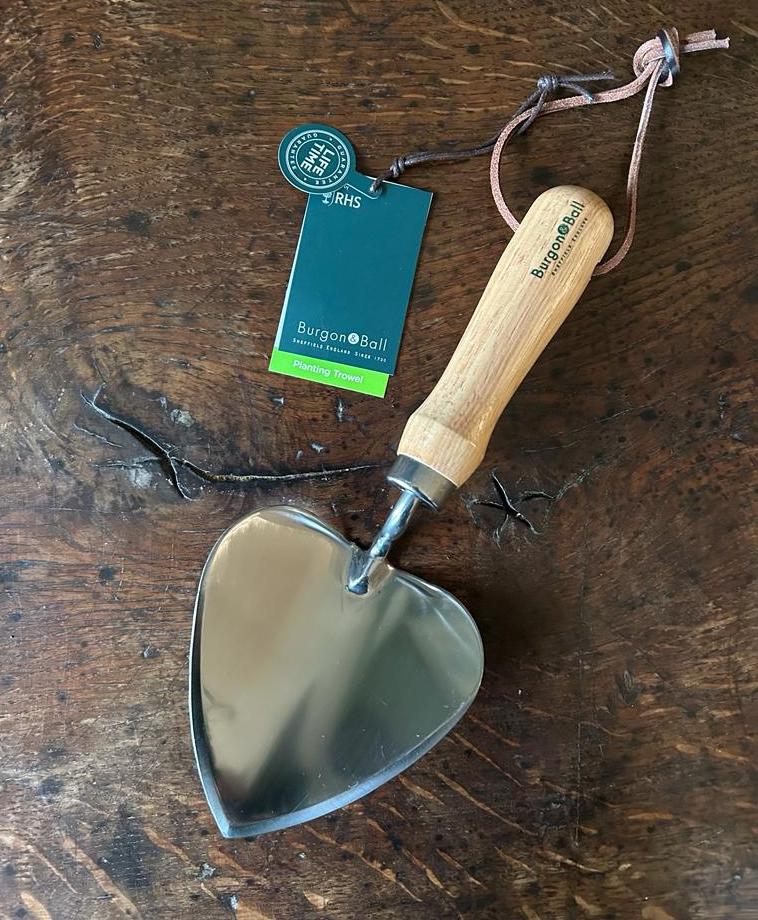
Did you see the gorgeous trowel Laura was using? We are excited to say that it’s a new addition in our online shop – what a lovely gift for a keen gardener!
NB If you’re not already a subscriber and you’d like a bit more gardening chitchat from the3growbags, please type your email address here and we’ll send you a new post every Saturday morning.
From now on, evergreen shrubs become more and more important as the last remaining leaves of deciduous plants fall to earth. None more so than this euphorbia – click on the image to find out more…
